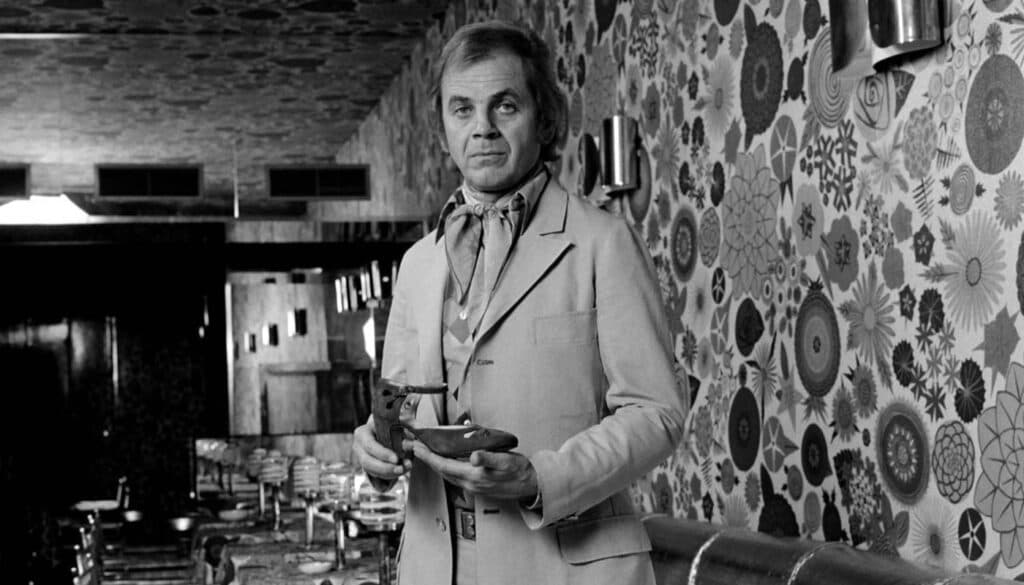
SCOTT, KEN
BRAND AND FASHION DESIGNER , S
KEN SCOTT (1919-1991) IS THE INVENTOR OF A WORLD MADE OF SPECTACULAR FLOWERS, PLANT INTERWEAVING, ANIMAL PRINTS AND EXOTIC FRUITS
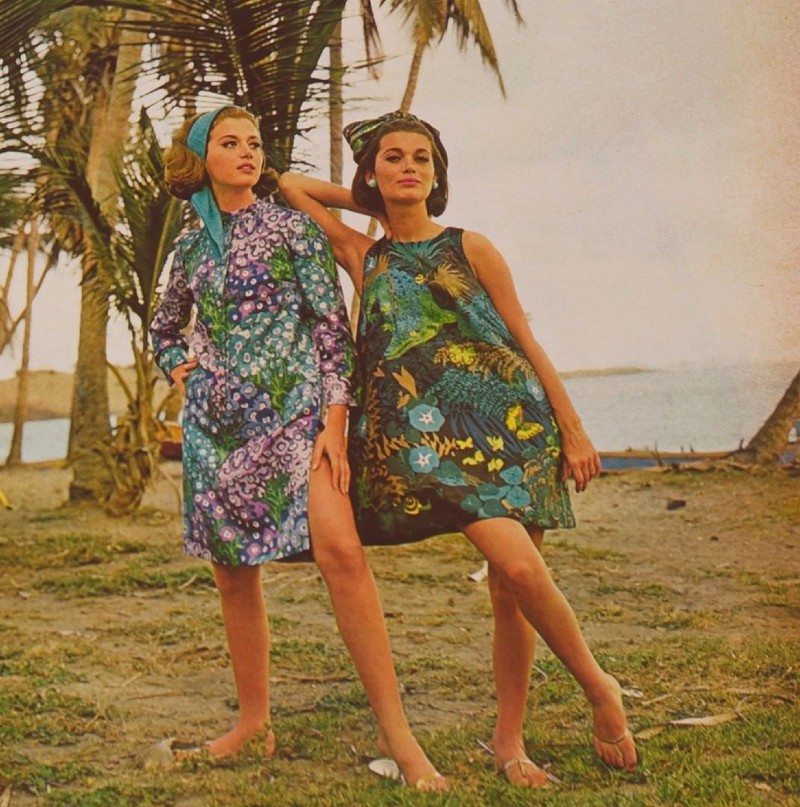
George Kenneth Scott, aka Ken Scott (1919-1991), is certainly the spokesperson for a fashion that is simple and essential in shapes but extremely refined in prints and colors. American from Indiana, he was born in Forth Wayne to a photographer father. A strong passion for painting led him, at the age of eighteen, to enroll first at the Parsons School of Design in New York. Immediately after he enrolled in the selective Moses Soyer. He soon attended ateliers such as William Hayter’s where he met well-known artists such as Matta and Chagall, destined to remain his old friends. It is the moment in which he also has the opportunity to meet Peggy Guggenheim, the well-known art collector who in 1944 will organize a personal painting for him.
KEN SCOTT: THE ARRIVAL IN EUROPE
In 1946 he settled permanently in Europe, landing in France. At the beginning he leads a bohemian life between Paris and Ele, a place on the Cote d’Azur where he rents a house that will be his refuge for his entire life. France also made his debut in Textile design together with Joe Martin, another designer who came from overseas, with the creation of floral patterns for the most famous French textile producers. The well-known sketch of Rose à longue tige printed by Abraham and chosen by Christian Dior for his haute couture spring summer 1954 collection is of him. A real success that pushes him to try new goals and to propose himself on other markets.
After having traveled all over Italy, in ’55 he arrived in Milan and opened a studio in Sant’Andrea. Here he founded the Falconetto brand with Vittorio Fiorazzo, a company specializing in printed textiles for furniture.
The production of fabrics signed by the artist immediately revolutionized the taste of the time he conceived, both for interior design and for fashion, fabrics that did not talk too much about classic solid colors with muted shades. Besides the peculiarity of the stylized floral designs, what is most surprising will be the use of bright and sunny colors, together with the unpredictability of their combinations.
Soon his fantasies are adapted by many names of the Italian look. Among the many Venetians, Biki, De Barentzen and some luxury prêt-à-porter brands in Milan in the 1950s. Thus the Ken Scott phenomenon explodes. He is also the first to print floral motifs on wool for clothing. From the collections of fabrics to those of foulards and scarves, the step into the world of clothing is short.
KEN SCOTT’S 1960S
From 1962 he began to design lines of clothes and accessories with his name. Via Verri, via del Gesù, Via Bogutta, the laboratory in via Cadolini, up to the showroom in via Corridoni, which opens onto a large flowered terrace, are the significant stages of the Milanese offices and their creative evolution. Dahlias, hydrangeas, convolvi in silk shantung, twill, crepe and taffeta characterize his first fashion shows. But it will be the innovative synthetic fibers, such as the Ban Lon jersey and the Qiana Dupont jersey, crease-resistant and very practical that will make him famous as the stylist of modernity and color.
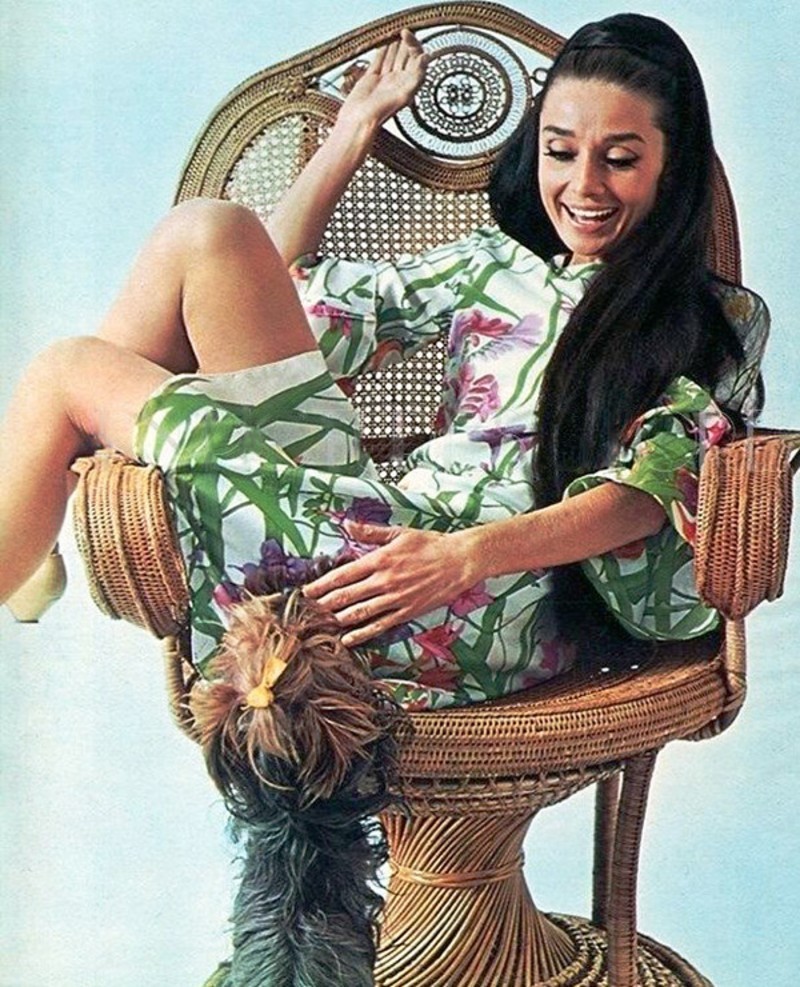
Even the muffled 60s atmosphere of the Sala Bianca of Palazzo Pitti will be revolutionized by the presence of a colorful cowboy surrounded by models with elastic and non-deformable flower-dresses in the most daring shades. Promoter of show catwalks in the most unusual places. From a circus tent on the Appia Antica to the bustling city streets, he causes a sensation by making his models dance to beat music. For his performances he also meticulously designed all the accessories. From shoes to hats, from bags to bijou to glasses, to give life to that total look concept of which it remains one of the forerunners.
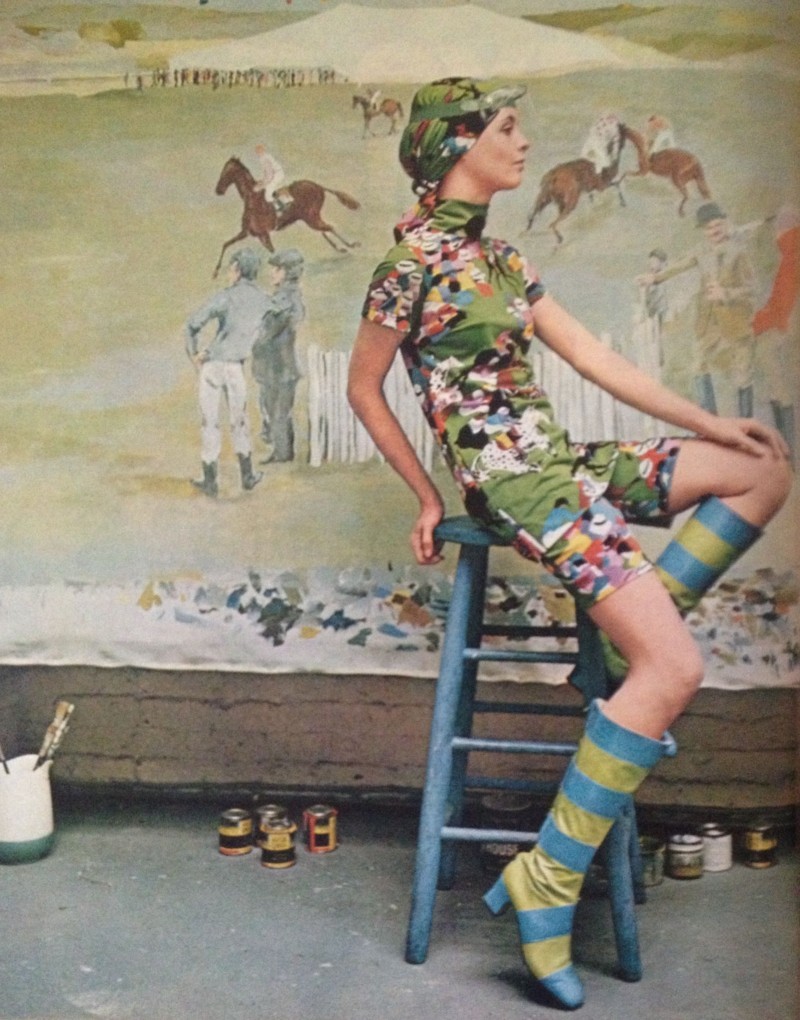
THE 70S
In the 1970s, with a large following of the public, he proposed delightful patterned knitted chemisiers in cotton, wool or synthetic with buttons signed with his initials. Or evening dresses-slip and Beach-jamas with low-waisted trousers with a clear gypsy eco. Many try to imitate it, but the Ken Scott style remains inimitable also thanks to the use of a twelve-color printing technique. A much more complex technique than that commonly used by textile entrepreneurs and printers of the time, which involved a maximum of six color passages. His invitations, brochures, press releases, posters and advertising photos also document the unbridled imagination of this artist. Also along with this, the places and themes of his presentations.
AN ECCENTRIC CREATIVITY
In ’68, in the role of a tamer, he makes his models move like felines, wrapped in hoods, overalls, maxi zebra and leopard-print dresses. While in ’72, at the Piper, he shows the famous Findus collection which inaugurates the trend of pop figurative art in Italian fashion. Watermelons, courgettes, fried eggs, peas, chicken legs, asparagus and brittle triumph, towering over day and evening dresses. Dresses made in the most eclectic materials, among which the new Bandura stands out, a brand new nylon crepe produced by Bancroft.
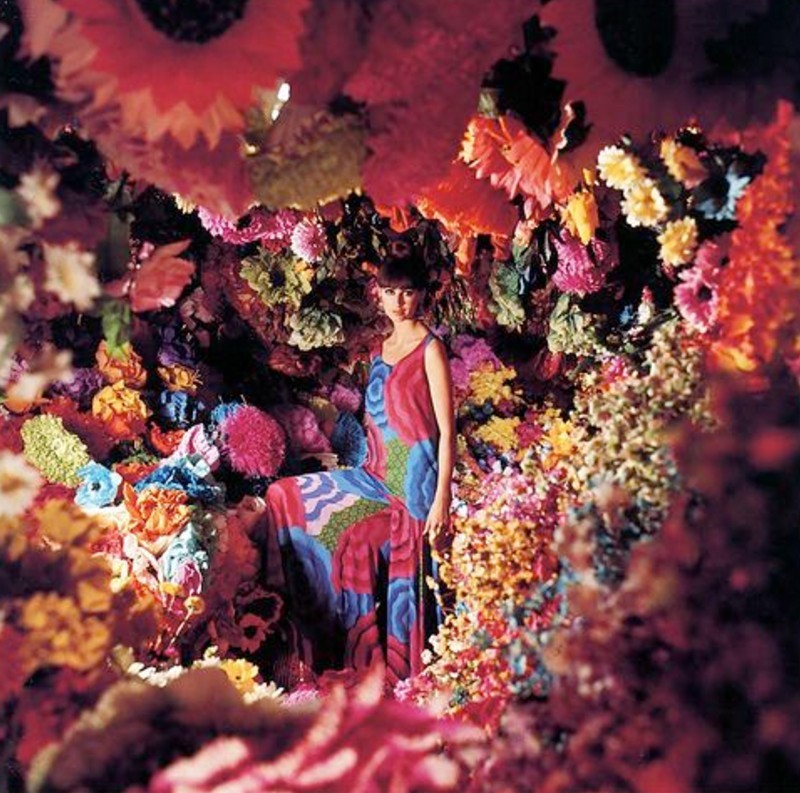
These are the years in which he always opens his Eat and Drink restaurant in Milan, in via Corridoni and in which the references to a certain surrealism, filtered through the memory of Schiaparelli , are more evident. Pasta necklaces, textile patterns reproducing salami or sausages and porcelain buttons in the shape of a plate full of spaghetti are born.
THE MOST FAMOUS COLLECTIONS
Through the Amanti (’67), Circo (’68), Gipsy Caravan (’69), Sport (’69) collections, the first show was dedicated to men’s fashion (’70). However, to reach Unisex (’70) and Kimonomania (’71 -’72) winning an Oscar for Fashion in ’68, Ken Scott goes through the history of international costume with the air of an enfant terrible. Determined to transform women into sunny gardens and fashion into a colorful game.
The designer died in 1991. However, the creative activity did not cease. All thanks to the homonymous Foundation which he himself established in ’89, owner of the archive, of the various brands and of the Ken Scott Studio.
Read also:
Mantero expands its historical archive with Ken Scott


